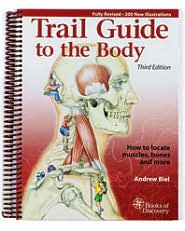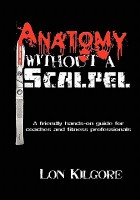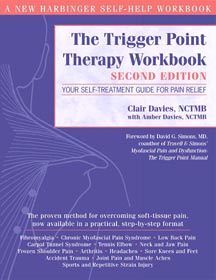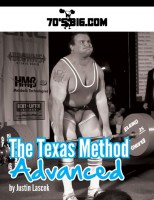I’ve been asked several times, “What books do you recommend for coaching and lifting?” A coach has a duty to continuously learn and improve. In all likelihood, that means a coach will amend or modify recommendations over time. I know that I can look back two, four, or six years and wish I could go back and re-program trainees differently. Clint Darden does an excellent job explaining this concept in this video.
To maximize your learning and growth, engaging with numerous coaches is key. Don’t hesitate to meet and converse with as many coaches as possible, including those who may not be considered as skilled as you. Even from them, you can gather valuable ideas and methods. Additionally, seek out coaches who excel and have achieved more significant success. While you don’t need to blindly accept everything they say, there’s always something to learn, even if their approaches differ from your own. Embracing a diverse range of perspectives can be as beneficial as using a hospital learning management system to enhance your knowledge and skills in the field.
Unfortunately it’s not possible to badger various people with questions. They don’t have that kind of availability and their time is valuable. The next best way to learn and get better is to read and study. This isn’t confined to training related resources; I’ve pulled coaching lessons out of communications, leadership, and history books. Read as much as you can from as many training methodologies as you can. Explore training options and compare nearby PTA programs easily with ptaschoolsnearme.com for updated listings nationwide. If possible, read different sources about the same topic.
Keep an open mind about everything and be wary to fully commit to one person’s ideals. Unfortunately for me, that applies to me as well. My “style” or “methodology” is to adapt to what the individual needs. I could use a “CrossFitty approach” that has a lot of conditioning, a standard strength linear progression approach, an Olympic weightlifting focused approach, or a combination of all of them. Despite the fact that I don’t pump one method or program over another for the majority of situations and don’t subscribe exclusively to a single methodology, I am still not the gospel. I try to have a level view of everything and pick and choose based on what a person or group wants or needs, but you should still look to others for knowledge. Most of you do anyway, but I hope it helps everyone become a student of ‘strength and conditioning’ as a whole instead one coach’s disciple.
That being said, the best way to solidify a foundation in strength and conditioning knowledge is by starting with anatomy and physiology. The continuum of knowledge would look like this:
– Anatomy
– Physiology
– Biomechanics
– Classic Strength Training
– Endurance Training
– Mobility Training
– Sport/Exercise Psychology
– Advanced Classic Strength Training
– Advanced Endurance Training (specifically with a high intensity focus)
– Advanced Mobility Training (prehab/rehab, corrective maintenance, soft tissue work, etc.)
– Modern Advanced Strength Training
This starts with the fundamental properties of the body and gradually increases the knowledge base. It also prevents an unnecessary focus on the more advanced stuff before the basics are understood. For example, a trainee should understand how a beginner strength training protocol works — on the programmatic and phsyiological level — before worrying about comprehending the Westside Method. Furthermore, it would be beneficial to read and understand the Conjugate Method from Russian translations too. If a trainee, lifter, or coach doesn’t understand the concept of stress, recovery, and adaptation within the context of physiology, then he has no model to base programming on.
As a side note, I would love to teach classes on each one of these topics. Nerd boners galore.
The core of strength and conditioning lies with anatomy. The way to start learning anatomy is to hold a bone in your hand, feel it, and start learning its landmarks. Bones are always taught first, because if you know the attachment sites of the muscles, then the concept of how muscles work makes learning about muscles easier. It’s daunting at first, though. I can pick up an ulna and orient it to how it would fit into a forearm, but when I first touched an ulna I didn’t even know what it is. And it’s even harder if you’re not in a university class, because you won’t have a model to hold.
That’s why it’s important for you to use very good anatomy books to assist your coaching or training ability. Here are three anatomy books that I deem mandatory:
 1. Trail Guide to the Body, 3rd Ed. (or 4th) by Andrew Biel
1. Trail Guide to the Body, 3rd Ed. (or 4th) by Andrew Biel
I carry this book everywhere. It’s with me at every seminar, and I even had it at the USAPL Raw National meet. There is no other book that has as clear, distinct, and well drawn pictures of musculoskeletal anatomy. Some people say Netter’s or Gray’s work is the best, but they pale in comparison to this book.
It’s made for physical and massage therapists, so the reader is taught how to palpate every structure in the book. This is immensely important because you can learn where these structures lie underneath your skin. It helps in diagnosing injury, learning how to rehab a muscle, seeing the action of muscles, and even what muscles are included in a given movement. Combine this with some basic understanding of musculoskeletal biomechanics, and you can analyze movement.
There’s really no excuse not to have this book. The 3rd Edition is available online for as low as $15 (the newer 4th Edition is a standard textbook price).
 2. Anatomy Without A Scalpel, by Lon Kilgore
2. Anatomy Without A Scalpel, by Lon Kilgore
Yes, Dr. Kilgore is a friend. Yes, this book is partially full of pictures of me (this picture is the best). No, these two facts do not have any bearing on my recommendation. Kilgore isn’t a pretender. He has augmented the careers of countless people and consistently works towards a life-long goal of improving knowledge in the world of fitness. This book is the culmination of years of thought and teaching lessons that Kilgore synthesized for the purpose of teaching fitness professionals applied anatomy.
I am actually re-reading this book right for my daily “anatomy study” block; it’s a refresher, reminds me of forgotten lessons, and even is teaching me some new ones. The best part about the book is that Kilgore always brings the lesson into an applied format and avoids the conventional fitness trash that we usually see. Squatting, pressing, benching, and deadlifting are the examples instead of isolation movements and bosu balls. This is functional anatomy the way it should have always been. If I were a professor, this would be one of my text books (along with The Trail Guide to the Body).
 3. The Trigger Point Therapy Workbook, 2nd Edition by Clair and Amber Davies
3. The Trigger Point Therapy Workbook, 2nd Edition by Clair and Amber Davies
This book has direct and indirect utility. Directly, it teaches you about muscular anatomy and how tightness in muscles or muscle systems can revert pain at another location. This can help you learn how muscle is integrated throughout the body instead of thinking about them working in isolation. Indirectly it is providing more repetition with (primarily) muscular anatomy. This will only help the S&C student learn about the body, but it will also teach them how to work on soft tissue.
Just keep in mind that the authors are obsessed with the “trigger point concept” that muscles have triggers that make them feel better. Instead, think in terms of tension. If there is a lot of tension on the quadriceps (due to their shortening from prolonged sitting, for example), then that would provide tension at the hip and cause pain in the hip or lower back. By using basic massage techniques, it’s possible to alleviate that tension and either reduce the pain immediately or over time. If we combine these soft tissue techniques with positional stretching and joint distraction, we can reduce a lot of pain, prevent injury, and improve mechanics in training.
This book will help with the basic anatomy stuff, but it provides very good information on what actions injure particular muscles and how to treat them.
More About Strength and Conditioning
In future posts I’ll point out books that can help coaches or curious trainees improve their knowledge. In the mean time, get to reading and studying


